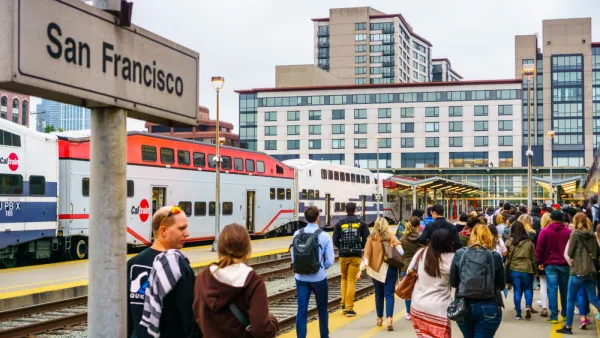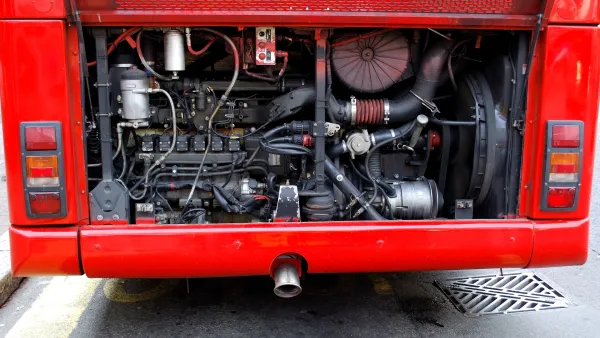Urban Engines uses real-time transit data, and raffles, to encourage transit riders to commute during non-peak hours.
Urban Engines, a startup run by Shiva Shivakumar and Balaji Prabhakar, is using 'crowd-sensing' real-time transit data and financial incentives to draw transit commuters away from peak hour traffic.
According to Eric Jaffe, Urban Engines' use of real-time data allows them to "produce interactive data visualizations that give short-term congestion insights (this platform is overcrowded, trains on this line are bunching) and longer-term traffic trends (on rainy days this station needs more cars). Transit operators can use that information to scheduled and dispatch train supply more efficiently."
Urban Engines' model of financially incentivizing off-peak commutes has already proven successful in three cities (Bangalore, Singapore, and Palo Alto). Per Jaffe, during a six month pilot study in Bangalore, "[roughly] 14,000 locals were given the chance to commute outside peak hours; every time they did, they improved their odds of winning a weekly raffle that paid out prizes ranging from $10 to $240. Over the course of the pilot, commuter traveling pre-rush hour doubled, and the average morning commute time of all bus riders fell from 71 to 54 minutes."
As Jaffe points out, Urban Engines' model has not been applied to drivers nor does it address "the generally entrenched nature of commute habits." And, while Urban Engines' real-time model helps identify system needs, it does not deal with systemic issues within transit agencies such as "limited equipment and personnel" to respond to such needs.
FULL STORY: Using Insights and Incentives to End Rush Hour

National Parks Layoffs Will Cause Communities to Lose Billions
Thousands of essential park workers were laid off this week, just before the busy spring break season.

Retro-silient?: America’s First “Eco-burb,” The Woodlands Turns 50
A master-planned community north of Houston offers lessons on green infrastructure and resilient design, but falls short of its founder’s lofty affordability and walkability goals.

Delivering for America Plan Will Downgrade Mail Service in at Least 49.5 Percent of Zip Codes
Republican and Democrat lawmakers criticize the plan for its disproportionate negative impact on rural communities.

Test News Post 1
This is a summary

Test News Headline 46
Test for the image on the front page.

Balancing Bombs and Butterflies: How the National Guard Protects a Rare Species
The National Guard at Fort Indiantown Gap uses GIS technology and land management strategies to balance military training with conservation efforts, ensuring the survival of the rare eastern regal fritillary butterfly.
Urban Design for Planners 1: Software Tools
This six-course series explores essential urban design concepts using open source software and equips planners with the tools they need to participate fully in the urban design process.
Planning for Universal Design
Learn the tools for implementing Universal Design in planning regulations.
EMC Planning Group, Inc.
Planetizen
Planetizen
Mpact (formerly Rail~Volution)
Great Falls Development Authority, Inc.
HUDs Office of Policy Development and Research
NYU Wagner Graduate School of Public Service




























